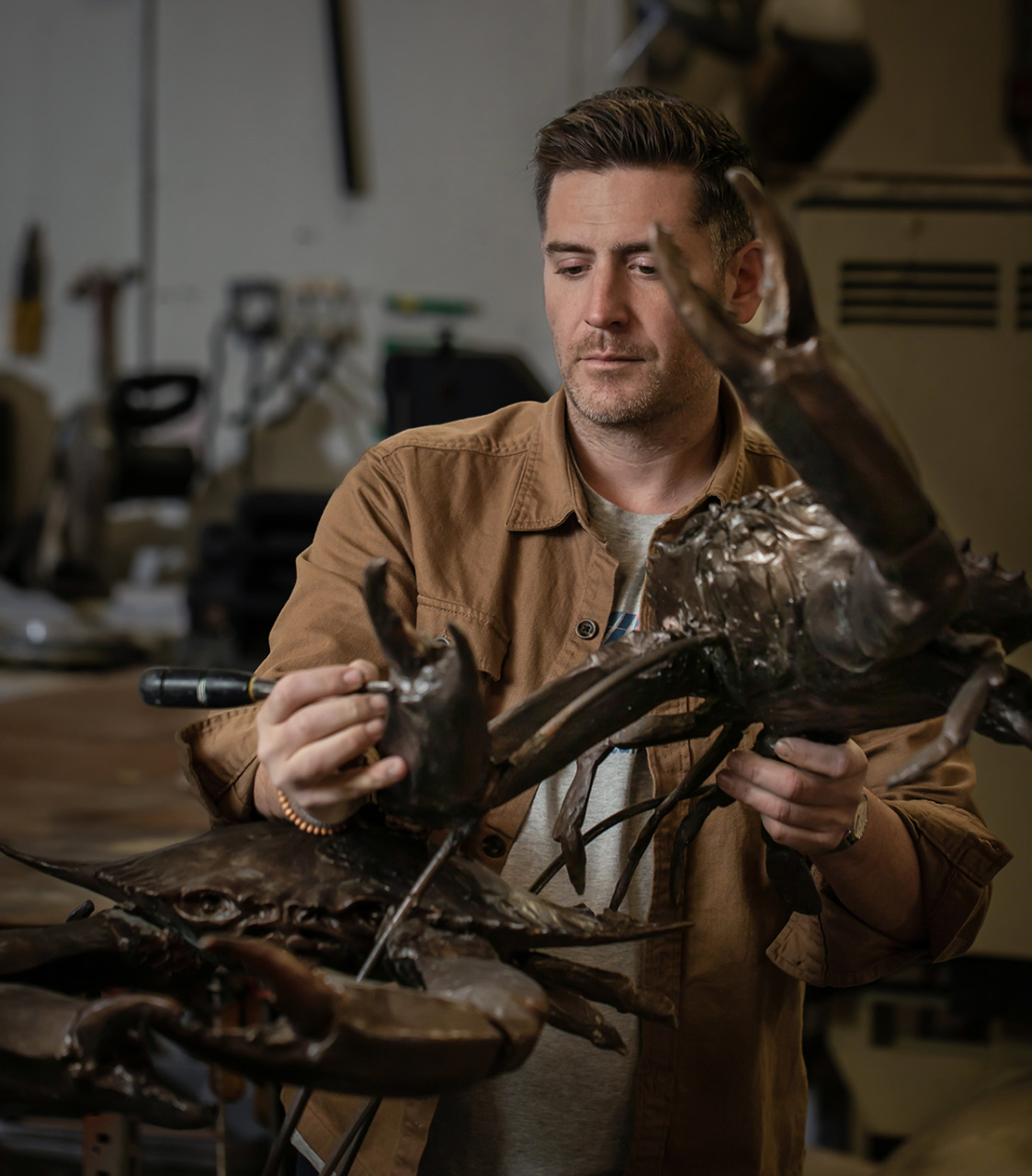Artist Will Hemsley's work celebrates the natural beauty of the Eastern Shore
Written by Joe Willey | Photography by Jill Jasuta
Ideas spread out through generations, like twisting tributaries of a river. It is an artist’s joy to navigate a sinuous course, absorbing various influences and leaving others. Some, like painter and sculptor Will Hemsley, fluidly move through ideas and bring them together. And the knowledge he gathers from each impacts how he treats the other.
Will is interested in the world around him and not only the Chesapeake Bay region and his art but also how all disciplines — science, literature, economics — connect. He is a keen observer and thinker. The water coursing through the Eastern Shore is an apt metaphor for the influences coursing through his work.
A local Eastern Shoreman, Will is originally from Kent Island and descends from the venerated American Revolution veteran and aide-de-camp of then-general George Washington, Tench Tilghman. His father, Tilghman Hemsley, is an artist and charter boat captain. Undoubtedly, he learned much from his father, inheriting both the love of salt water and the love of creating.
Naturally autodidactic, the compartmentalized way he received information in high school frustrated him. But during college and early in his career, as he saw connections everywhere — it changed things for him. “In art, experimentation rules,” he says. The freedom he found in exploration would be crucial early in his career.
While attending St. Mary’s College, Will trained as a painter, only taking one sculpture class. Later, a client who had purchased paintings explained that he was looking for a sculpture of Canada geese and asked if he could create what he was looking for. Without pausing, Will said, “Yes.” Improvising, he took geese from his freezer and used the birds as models for the new commission. Though his sculpture experience was limited, he ignored the obstacles, creating a celebrated work.

Moving between two unlike mediums — painting and sculpture — seems natural to Will. He knows each intimately and is philosophical about each. Painting, he says, is trickery, sleight of hand to make the flat surface seem three-dimensional, while sculpting is like wrestling, fighting the material and shaping it into a new physical form.

EXPERIMENTATION RULES: The freedom he found in exploration would be crucial early in his career.

In Centreville, a 6,000-square-foot workspace houses his studio and a gallery space presenting his work alongside the work of other artists. The gallery hosts four shows of new work each year. The space will soon house a fine arts foundry to cast his work and the work of others. This venture is another way Will is experimenting with his artwork.
Will’s projects have ranged from memorials for fallen soldiers and wildlife sculptures to paintings that celebrate hard-working watermen and the natural beauty of the Eastern Shore. For him, it is all connected. The path to satisfying and appreciated work twists and turns until it straightens out in a new and gratifying direction. With each successive painting or sculpture, new ideas unfold. CS
